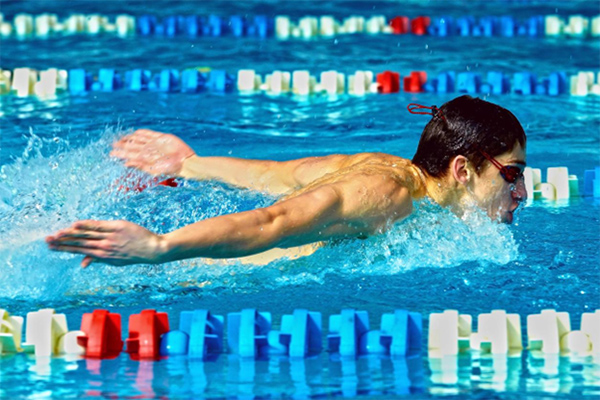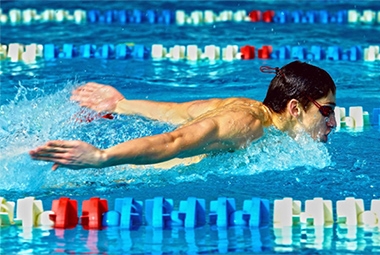
Shoulder injuries are common among swimmers and overhead athletes, often caused by repetitive motion and overuse. Two conditions that frequently arise in this context are swimmer’s shoulder and rotator cuff tears. While they are distinct, they can sometimes overlap or even progress from one to the other. Here’s how to tell them apart to help guide proper treatment and recovery.
Understanding Swimmer’s Shoulder
Swimmer’s shoulder is a general term for overuse injuries caused by repetitive overhead motion, especially in swimming, tennis, and throwing sports. The most common cause is shoulder impingement, where the rotator cuff tendons become irritated as they rub against surrounding structures during movement.
Key symptoms of swimmer’s shoulder include:
- Dull, aching pain during or after overhead activity
- Weakness or fatigue with repetitive motion
- Decreased performance or range of motion
- Soreness in the front or side of the shoulder
Swimmer’s shoulder often affects younger, active individuals and may be temporary if addressed early with rest, physical therapy, and activity modification.
What Is a Rotator Cuff Tear?
The rotator cuff is a group of four muscles that stabilize the shoulder joint and enable arm movement. A tear occurs when one or more of these tendons become damaged, either from acute injury or chronic wear.
Common signs of a rotator cuff tear include:
- Sharp or deep aching pain, especially at night
- Weakness when lifting or rotating the arm
- Clicking or catching sensation
- Limited ability to perform overhead tasks
Rotator cuff tears can occur in athletes, physically demanding workers, or older adults due to degeneration. While some partial tears can improve with conservative treatment, complete tears may require surgical repair.
Here’s a side-by-side comparison:
| Feature | Swimmer’s Shoulder | Rotator Cuff Tear |
| Cause | Repetitive overhead motion, impingement, and muscle imbalance | Acute injury or chronic degeneration of rotator cuff tendons |
| Common Symptoms | Dull ache, fatigue, reduced performance | Sharp pain, night pain, weakness with lifting |
| Severity | Typically mild to moderate, functional | Can range from partial to full-thickness structural damage |
| Treatment Approach | Rest, physical therapy, anti-inflammatory meds, biomechanics | Physical therapy, injections, and possible arthroscopic surgery |
| Recovery Outlook | Often resolves with conservative treatment | May require surgery for full recovery, especially in active adults |
Both conditions benefit from early diagnosis and a customized plan designed to restore function, minimize downtime, and prevent future injury.
Swimmer’s shoulder and rotator cuff tears often present with similar symptoms but involve different underlying issues. Understanding the difference is key to choosing the right treatment path. Early recognition and proper management can help prevent long-term damage and support a safe return to activity.
AUTHOR: Brian W. Hill, M.D., is a board-certified shoulder surgeon at Palm Beach Orthopedic Institute. He is an expert in advanced reconstructive and arthroscopic techniques and serves as an assistant team physician for the Washington Nationals and their affiliates. Dr. Hill treats shoulder injuries and arthritis with a focus on patient-centered care and clear communication.






